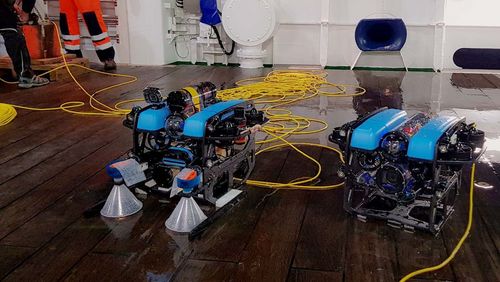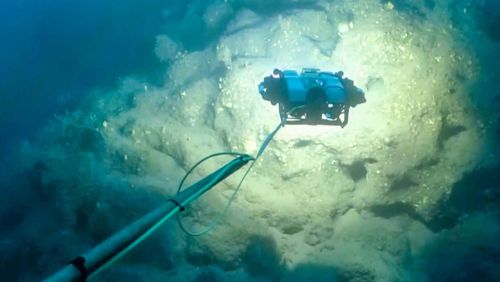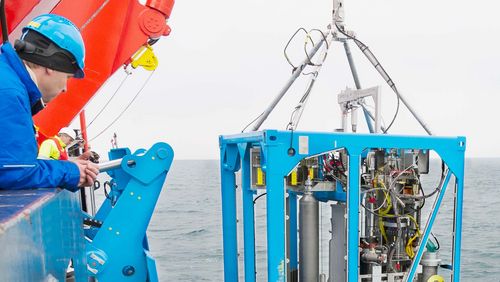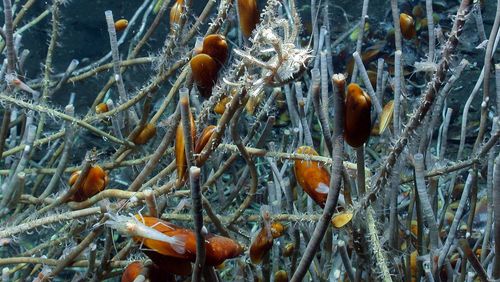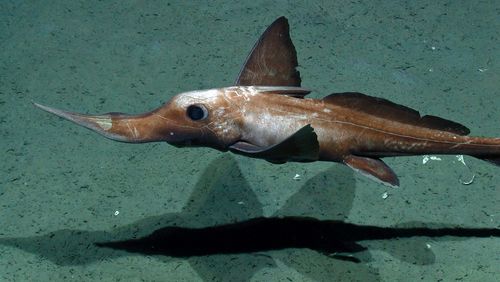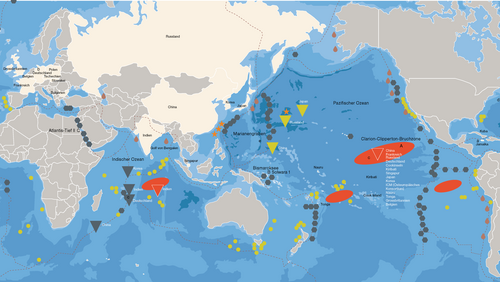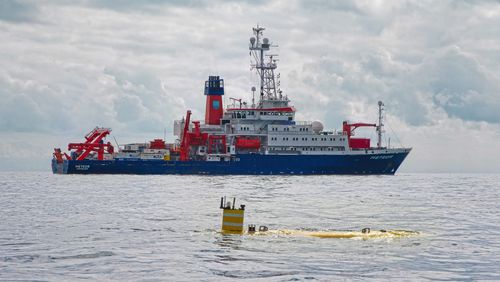
Safeguarding the deep sea
Over the course of millions of years, the deep sea has evolved into an extraordinary and vitally important ecosystem. Vast deposits of valuable natural resources are buried in the seabed – but extracting them would cause massive ecological damage. A strategy to protect the deep sea is being developed at the Innovation Center for Deep-Sea Environmental Monitoring at MARUM in Bremen – with funding from the Werner Siemens Foundation.
Werner Siemens Foundation Endowed Chair Ralf Bachmayer and his team at the Innovation Center for Deep-Sea Environmental Monitoring are working on the prototypes for environmental monitoring systems. They have plans to test the systems in the deep sea in 2025. Afterwards, the next phase will be dedicated to developing autonomous sensor networks in close partnership with private companies.
Two research assistants and two technicians reinforce Bachmayer’s group, which also works closely with MARUM – Center for Marine Environmental Sciences at the University of Bremen. The researchers have access to tried-and-tested MARUM equipment and autonomous underwater vehicles (AUV) to support them in charting the deep sea. The main challenges are finding ways to power the various instruments, transmit data and guide the camera over the ocean floor. Another problematic issue is that the loose seabed layer below the water column is only partially made of stone; instead, much like moorland, it consists mainly of unstable, floating particles that even the slightest of motions can disturb – which could lead to serious disruptions in the deep-sea ecosystem.
To accommodate the hyper-sensitive ocean floor, Ralf Bachmayer and his team have designed a strategy with two underwater vehicles that operate in tandem. From a discreet distance, a “mother submarine” (the H-ROV, a hybrid underwater vehicle) shines a light on a large swath of the seabed and takes low-resolution photos of the general area. The mother submarine also controls a small, agile vehicle – an AUV – that hovers closely over the seabed. Moving with extreme caution, it makes high-resolution images, which it then sends to the mother submarine. It’s critical that the small AUV can maintain its position and orientation even in turbulent conditions, which is extremely difficult at the bottom of the sea where GPS is out of range and where strong ocean currents can easily force the vehicle off course.
To navigate the AUV, Bachmayer and his team have designed a modular control system that uses sensors to detect the vehicle’s depth, position and acceleration. An algorithm then processes the signals to determine the AUV’s current orientation and direction. This information and the intended movement profile is delivered to the control system, which translates the data into steering signals for the vehicle’s propulsion drives. These signals enable the AUV to automatically maintain its position and orientation in the water; initial tests conducted in the rough waters of the North Sea went according to plan. The researchers plan to use an innovative optic modem to transmit the high-resolution images of the seabed via the mother submarine up to the research team. The first tests of the optic modem in the Mediterranean Sea were also successful.
Facts and figures
Project
The Innovation Center for Deep-Sea Environmental Monitoring, financed by the Werner Siemens Foundation, aims to develop prototypes for environment monitoring systems. A pilot mission in the deep sea is scheduled for 2025. Afterwards, autonomous sensor networks will be developed in close collaboration with industry partners and then put into operation.
Support
The Werner Siemens Foundation is supporting the establishment of the Innovation Center for Deep-Sea Environmental Monitoring by financing a professorship (Prof. Dr Ralf Bachmayer) and positions for two research associates and two technicians as well as equipping a lab and a workshop. In 10 years, funding of the entire group will be integrated into the core budget of the University of Bremen.
Funding from the Werner Siemens Foundation
4.975 million euros
Project duration
2018 to 2028
Project leader
Prof. Dr Michael Schulz
Partner
MARUM – Center for Marine Environmental Sciences at the University of Bremen




